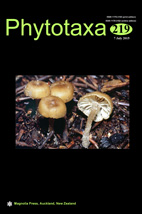Abstract
This paper describes a new genus of lichen photobionts, Vulcanochloris, with three newly proposed species, V. canariensis, V. guanchorum and V. symbiotica. These algae have been discovered as photobionts of lichen Stereocaulon vesuvianum growing on slopes of volcanos and lava fields on La Palma, Canary Islands, Spain. Particular species, as well as the newly proposed genus, are delimited based on ITS rDNA, 18S rDNA and rbcL sequences, chloroplast morphology, and ultrastructural features. Phylogenetic analyses infer the genus Vulcanochloris as a member of Trebouxiophycean order Trebouxiales, in a sister relationship with the genus Asterochloris. Our data point to the similar lifestyle and morphology of these two genera; however, Vulcanochloris can be well distinguished by a unique formation of spherical incisions within the pyrenoid. Mycobiont specificity and geographical distribution of the newly proposed genus is further discussed.

